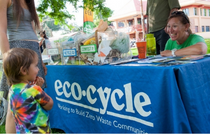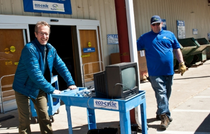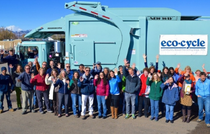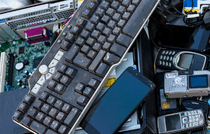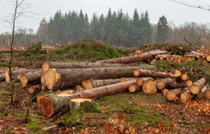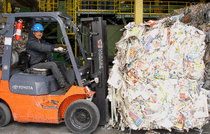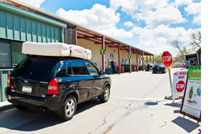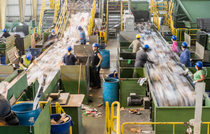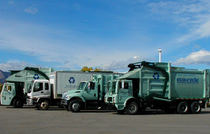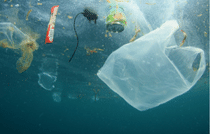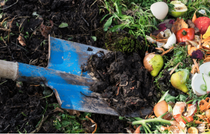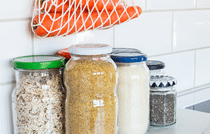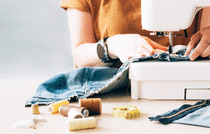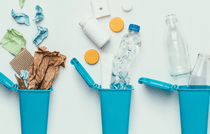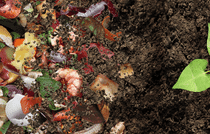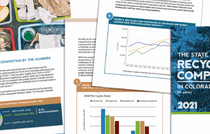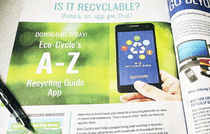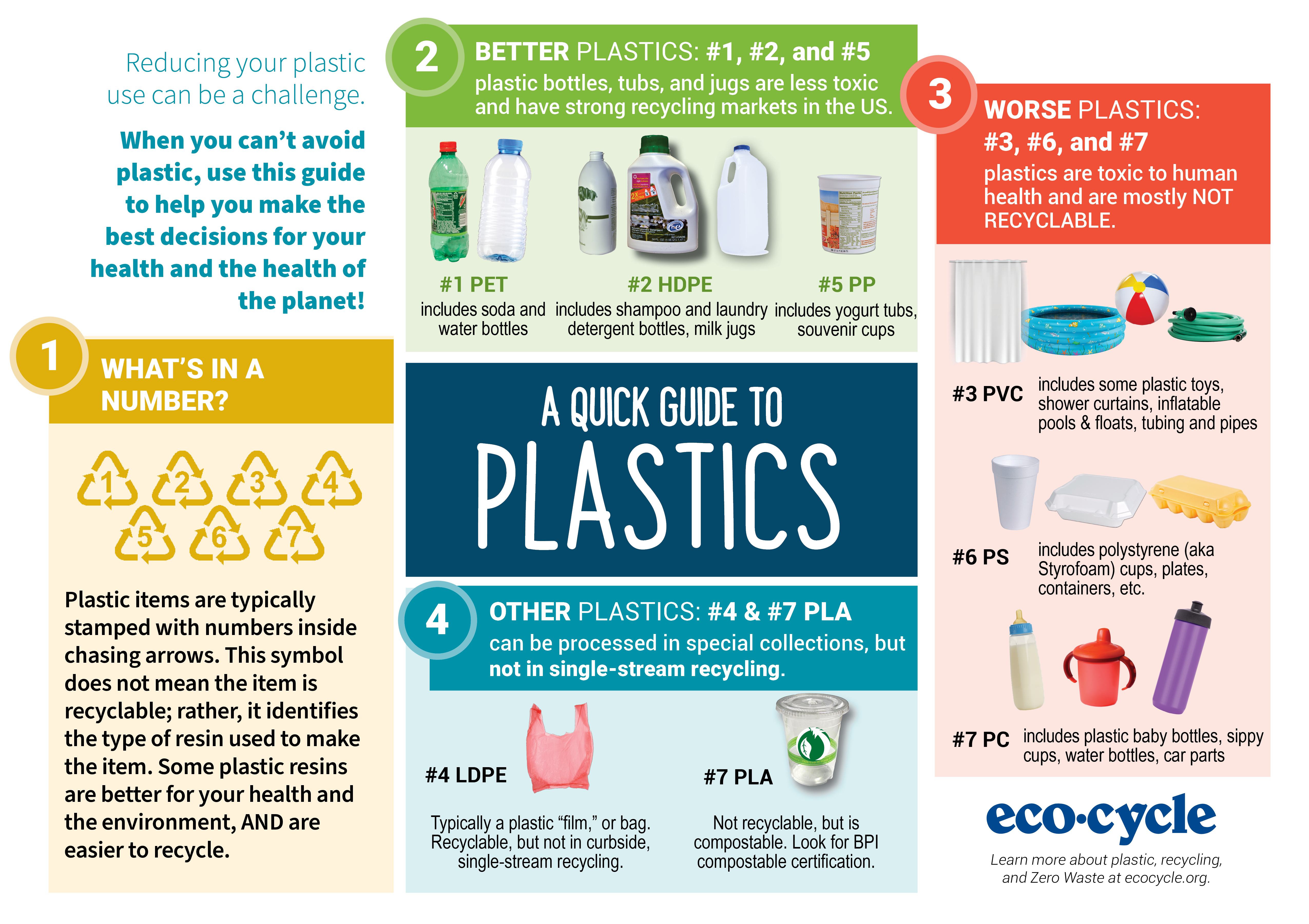Zero Waste Is About Preventing Waste Before It Happens
A lot of people think Zero Waste is only about recycling and composting as much as possible so you can minimize what goes in the trash can. The truth is, that’s only part of the story.
While handling the “downstream” side of waste by recycling and composting everything you can is part of the solution, many environmental and social impacts happen “upstream” before those discarded products ever reach store shelves: For every trash can you put out at the curb, the equivalent of 71 trash cans’ worth of waste has already been created in the processes used to extract natural resources and manufacture them into products and packaging. Reducing the environmental and social impacts of these 71 cans—resource wars, pollution, deforestation, species and habitat loss, etc.—is what Zero Waste is really about, and it’s a critical part of solving our climate crisis. In fact, the EPA estimates that 42% of all US greenhouse gas emissions come from manufacturing, transporting, and disposing of our goods and food.
So how do we prevent those 71 cans of waste? We need larger systemic change that holds producers responsible for the waste and pollution they create and to incentivize them to use recycled content as their feedstock instead of natural resources. To build toward that larger change, we go to the power of the consumer. Every purchase we make is a vote either for environmental destruction or against it. If you buy it, they will make it. If you don’t, they won’t. We have already seen this kind of advocacy push producers into redesigning their products to be recyclable or compostable.
Unfortunately, product labels don’t include information like, “The clearcutting of an ancient forest went into the making of this product and as a result, many indigenous peoples were displaced.” That’s why we pulled together this room-by-room guide to show you which everyday items have some of the biggest impacts “upstream” and which eco-friendly products can replace them.
In the Kitchen

The Wasters
- Food scraps in the trash. When food ends up in the landfill, it biodegrades without oxygen and creates methane, a greenhouse gas that is 84 times more powerful than CO2 in the short term.
- Paper towels and napkins. The virgin timber-based pulp and paper industry is the third greatest industrial emitter of greenhouse gases and causes the destruction of ancient forests and wildlife ecosystems in the US and Canada. Chlorine bleaching used to whiten paper is a leading source of dioxin, the most toxic substance on Earth, now found in our air, water, and in the bloodstreams of humans, fish and even polar bears.
- Plastic packaging. Specifically, plastic packaging with a #3 (PVC), #6 (polystyrene), or #7 (polycarbonate). These three plastics in particular are problematic and have been known to leach harmful chemicals that can easily make their way into your body. Plastics with a #3, #6, and #7 are also either very difficult to recycle, or can’t be recycled at all!
The Zero Waste Solutions
- Get a compost container to go under your sink or on your kitchen counter to collect your food scraps. Composting prevents methane emissions and restores our soils, which increases their natural ability to draw carbon out of the atmosphere and store it safely and beneficially in the soil. Get more composting tips here.
- Get raggedy. Replace your paper towels with sturdy rags or sponges for cleaning and replace your paper napkins with cloth ones. Having trouble letting the paper go? Buy products that contain at least 80% post-consumer recycled fiber.
- Skip the toxic plastics. Our Quick Guide to Plastics can help you remember which plastics are more harmful than others. Choose glass containers to store foods to avoid the use of plastic.
In the Laundry Room
The Wasters
- The clothes dryer. Electric dryers are usually the second-biggest electricity hog in a household after the refrigerator.
- Dryer sheets. Dryer sheets are single-use disposables loaded with fragrance chemicals including known carcinogens, neurotoxicants, and skin irritants.
- Chlorine bleaches and detergents with phosphates. Chlorine bleach can irritate your skin, eyes, and lungs, and it releases carcinogenic dioxins. Once it enters the water system, it is poisonous to insects, fish, and wildlife. Phosphate detergents have been known to cause nausea, diarrhea, and skin irritation. Even worse, they’re persistent, meaning they remain active even after the wastewater treatment processes, so they end up in rivers and lakes.
The Zero Waste Solutions
- Air-dry your clean laundry. Here in Colorado we have 300 days of access to a renewable energy source to dry our laundry: the sun. Hanging clothes on a clothesline or a clothes drying rack can save an average of $85/year.
- Skip the dryer sheet (because you’re skipping the dryer). Air-drying clothes, particularly outdoors, will give them a fresh scent. But if you are machine-drying and really miss the dryer sheet, wool dryer balls are a non-fragranced, nontoxic, reusable alternative. Just like dryer sheets, the balls are placed directly in the dryer with your laundry, helping the clothes to dry faster and reduce static. Or try adding vinegar or baking soda into the wash cycle as both will soften laundry and reduce static. Alternatively, you can dampen a washcloth with vinegar and add this to your dryer as a make-shift dryer sheet. Miss the fragrance? Add your favorite essential oil to the dryer ball or to a washcloth.
- Clean and whiten naturally. Use biodegradable laundry soap without phosphates and non-bleach whiteners that contain hydrogen peroxide instead of chlorine.
In the Bathroom
The Wasters
- Virgin-content (aka trees) toilet paper and facial tissues. As we discussed in the kitchen section, paper products like these made from trees and bleached with chlorine contribute to the climate crisis, the destruction of wildlife habitat, and to releasing serious toxins in waterways planet-wide.
- Don’t contaminate clean air. Conventional cleaners, such as those containing ammonia, bleach, or solvents, contribute to indoor air pollution, which may be 2–5 times worse than outdoor air pollution. Conventional cleaners can also lead to contaminating US streams and waterways with disinfectants and detergent compounds.
The Zero Waste Solutions
- Don’t flush forests: Use post-consumer recycled toilet paper and facial tissues. Using recycled paper saves money and energy, prevents clearcutting, and reduces wastewater, air and water pollution, and greenhouse gas emissions. If every household in the US replaced just ONE roll of virgin-fiber (made from trees) toilet paper—500 sheets— a year with a 100% post-consumer recycled roll, we could save 423,900 trees annually. Most recycled-content paper is bleached without toxins by using hydrogen peroxide. Look for totally chlorine free (TCF) or processed chlorine free (PCF) with 50–100% post-consumer content.
- Use “clean” cleaners and go nontoxic. A few safe, simple ingredients, such as vinegar, baking soda, borax, and dish soap, can be used in most cleaning situations. If every household replaced one 32-oz solvent-based glass and surface cleaner with a solvent-free cleaner, we could prevent 9.3 million lb of volatile organic compounds from being released into the environment. Learn how you can make your own safe, inexpensive cleaners.
On-the-Go
The Wasters
- To-go cups and containers. Americans throw out more than 2.1 MILLION TONS of paper and plastic plates and cups every year. Many restaurants still provide containers made from Styrofoam (#6-PS) and other icky plastics.
- Bottled water. The bottle is recyclable but . . . producing the bottles for American consumption alone requires the equivalent of more than 17 million barrels of oil, and that’s not including energy for transportation. It takes three liters of water to produce one liter of bottled water, twice as much as to produce tap water. Some multinational water bottlers are draining local water supplies, denying communities of their basic right to clean water.
The Zero Waste Solutions
- Bring your own. Be prepared to combat waste by traveling with a reusable stainless steel coffee mug, a cloth napkin and a set of reusable utensils, whether it’s for your lunch in the office or a trip up to the ski slopes. Bring your own reusable to-go box—Pyrex® containers, To-Go Ware® stainless steel tiffins, or flexible, resealable silicone containers like those from Zip Top® or Stasher® Bags. You can also ask the restaurant to consider an eco-friendlier option such as plain aluminum foil.
- Bring your own water in a reusable bottle: Stainless steel bottles can be reused countless times; look for bottles with no BPA coating. Tap water is more strictly regulated than bottled water and saves you money along with environmental destruction.
Take Your Home to the Next Level with Room-by-Room Waste Audits
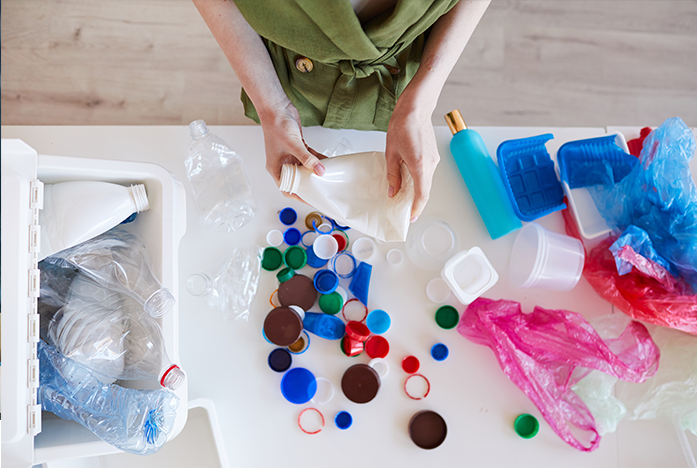
Now that we have gone over room-by-room “wasters” and Zero Waste solutions, it’s time to take your waste reduction game to the next level! Try doing a waste audit in each room of your house to help identify what your most common “wasters” are. This may sound daunting, but if you follow the steps below, and take it one room at a time, we know you’ll have success!
How to Do a Waste Audit
Step 1: Collect your trash and recycling over a week or so, maybe a little longer if you’ve already been working on reducing your waste. Make sure it’s a sampling of an average week or two, though, so it’s representative of your consumptive habits.
Step 2: Go through it! Start with either trash or recycling, and then just go through it item by item.
Step 3: Record your most common waste items (even if they were recyclable, were they avoidable?). Record what the item is, how much you use it, and whether there’s a better alternative for it.
Step 4: Pick ONE item to start with.
Step 5: Find an alternative for your item.
Step 6: Just focusing on that item, work to phase it out. We recommend trying to phase out one item monthly, but feel free to go at whatever pace works best for you!
- Finding that a lot of the “wasters” in your home are plastic? Try using our How to Quit Plastics Workbook to help you focus your home waste reduction efforts on plastic items.
